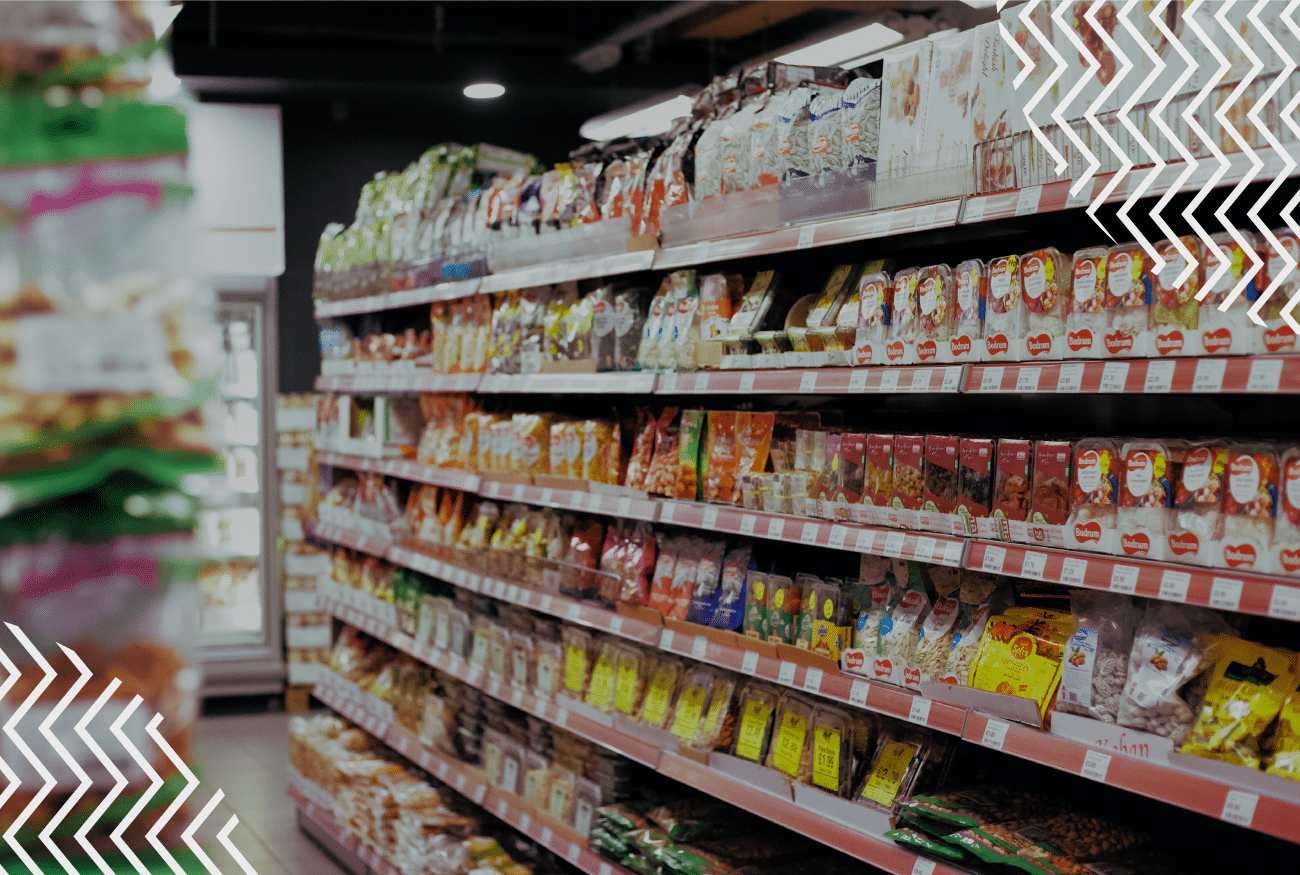What is Perfect Retail Execution?
Have you ever gone out of your way to go to your favorite grocery store? Many Americans have, whether it’s for cleanliness, availability of a certain brand, or the offering of essential non-food products. 63% of Americans say that something as simple as a loyalty program influences where they shop. And even though COVID-19 completely upended the retail landscape as we knew it—about 45% of consumers increased their online grocery shopping during the pandemic—many shoppers still crave an in-store shopping experience.
For consumers, the shopping experience extends beyond simply walking into the store, filling up their cart, and checking out. The shopping experience includes every touchpoint they encounter, including:
- The Exterior: Was the parking lot clean of debris; were there shopping carts in the corral?
- The Interior: Did they have the items needed at the price expected?
- Customer Service: Did an associate help you find an item; did they answer your questions about a product?
All of these elements and more combine to create one comprehensive shopping experience. To improve on this experience, category managers, visual merchandisers, field teams, and others will collaborate to develop a strategy for achieving a concept known as “the perfect store.”
What is a Perfect Store?
A perfect store is one that combines the right marketing and operational elements to create a seamless experience for shoppers. The concept was originally developed and popularized by Unilever, and while the global CPG giant uses the official name “Perfect Store,” other brands and retailers use other phrases to describe the same concept. Procter & Gamble refers to their retail standards as a “Golden Store,” PepsiCo aims for “Flawless Execution,” and Coca-Cola calls their program “Right Execution Daily”—a witty extension of their RED branding.
When implemented correctly, a perfect store strategy can increase sales and customer retention. According to Ipsos market research, 47% of households with children reported that their primary grocery store is out of one or more of their desired items at least half of the time. In the same survey, 36% of shoppers revealed that a store would only need to be out of 4-6 items for them to shop elsewhere (with 23% saying they would draw the line at 1-3 items). Avoiding out-of-stocks is a key factor in executing a perfect store, but there are many others, as well.
What Does A Perfect Store Look Like?
Whatever sellers choose to call it (if anything), most have a program in place to perfect in-store execution and improve the shopping experience for every customer. On a high level, a perfect store will equally incorporate these elements:
AVAILABILITY:
Reviewing supply chain operations and monitoring out-of-stocks
VISIBILITY:
Ensuring planogram compliance and merchandising execution
VALUE:
Auditing price, perceived value, and sales
DISPLAY:
Ensuring promotional compliance and seasonal changes
While this mix is a good place to start, a perfect store strategy can look different at different stores based on their objectives. As a brand, it’s essential to first define what the perfect store means to you, and what KPIs you use to track it. Do you want to increase sales comps? Do you want to increase the average basket size or transaction count? Do you want to receive more five-star online reviews?
Once you’ve established your benchmarks for whatever a perfect store looks like to you, it’s time to activate your strategy. Here are five steps to creating the perfect store.
5 Steps to Creating The Perfect Store
1. Understand Shopper Needs and Behaviors
Many shoppers have experienced a situation like the following: They make a quick run to the grocery store because they’re out of milk. They leave the store with milk, but also vegetable broth, cheese, and strawberries. They didn’t need these items, but they were on sale, so they purchased them. The shopper may not have realized this, but they’ve been persuaded to buy these items by both placement and price. Retail brands work extensively to identify—and ultimately influence—shopper purchasing decisions.
When evaluating consumer shopping behavior, brands need to take into consideration a balance of qualitative and quantitative data. Analyzing objective sales data can offer insights into spending habits based on demographics, types of items purchased, and average basket size. Qualitative data, gathered from focus groups, surveys, and daily interactions with customers, can offer more personal insights into consumer intent and desires.
By understanding the unique habits of shoppers, retailers can better tailor the shopping experience to meet consumers’ needs and preferences. For example, as shoppers expect more convenience, a recent shift in customer preferences is a desire for grocery stores to become more of a “one-stop-shop”, with 27% of shoppers saying the offering of non-food products would incentivize them to shop at a particular store.
Brands can leverage this, and other valuable data—both primary and third-party—to strategically place, price, and promote their products in-store to boost sales and drive loyalty.
2. Prioritize Customer Experience
While following planogram and promotional compliance is undoubtedly worthwhile when implementing a perfect store strategy, the entire purpose behind creating a perfect store is so the shopper can have a satisfying shopping experience. Shoppers won’t remember what facings were next to each other on the shelf, but they will remember if they had a positive—or negative— experience finding what they need.
Even after the substantial migration to online grocery shopping during COVID-19, today’s shoppers still crave an in-person experience, with 46% saying if, given the choice, they would prefer to shop in-store instead of shopping online. Despite the convenience of grocery delivery, nearly half of all shoppers still prefer the ability to interact with products in a physical store. This creates valuable opportunities for retailers to win over customers through touchpoints like store cleanliness and in-stock shelves, but it also allows them to deliver first-rate service to keep customers coming back.
In order to focus on the human aspect of selling, retailers need to adopt digital systems that support merchandising, task management, and more. GoSpotCheck by FORM allows retail teams to empower workers and streamline execution processes so more resources, labor, and thought can be put in to delivering the best customer experience possible.
3. Leverage Relevance and Seasonality
One of the most challenging aspects of creating the perfect store is constantly adapting to seasonal or societal demands. This could mean changing out displays in Target to be relevant and timely—burgers and hot dogs preceding July 4th or backpacks during back-to-school season. But it could also mean completely disrupting standards and processes to accommodate a global pandemic—placing rations on high-demand items, restructuring aisles to accommodate one-way traffic, or installing hand sanitizer dispensers throughout the store. Many retailers even had to update their parking lot design, as buy online, pick up in-store (BOPIS) services grew 28% during the pandemic.
With all the constant modifications and pivots that retailers are having to make (whether it’s setting up a holiday candy display or placing social distancing stickers on the ground at check out), consistency is key in creating a seamless experience for shoppers. Retail leaders—as well as brands—want to ensure that products and displays are executed to maximize impact and sales.
Retail and brand teams can utilize several methods to confirm compliance, but when it comes to visual displays, the best approach for leaders is to simply see for themselves. Retail teams can leverage real-time photo reporting software, like PhotoWorks by FORM, to verify in-store execution instantly, ensuring that merchandising displays, pricing, and promotions are consistent, compliant, and correct.
4. Put Your Strategy to Work
Once you and your team have established your perfect store strategy, you can begin implementing and executing. At this stage, you can develop promotional plans, product placement approaches, signage and display strategies, and carry out all share of shelf and planogram compliance efforts. This is also when teams can direct attention to financial discipline and consistency by monitoring margin and pricing compliance throughout the year.
During the implementation stage, teams can leverage mobile execution software to streamline and monitor these operations. Mobile retail execution apps, like GoSpotCheck by FORM, put the power in the hands of retail workers and offer an intuitive solution for quick and efficient audits, photo and content sharing, and task distribution. Ground-breaking solutions like these allow retailers to integrate and audit their perfect store strategy into one streamlined process.
5. Test, Learn, & Win
Lastly, teams need to test and audit whether their efforts were successful in developing a “perfect store” experience. To benchmark success, retailers need to go back to their original KPIs—did you increase sales comps? Average basket size? Transaction count? Online reviews? Were there any conditions in the overall retail environment that could have impacted these results?
For big brands and larger retailers, evaluating results using traditional methods can be time-consuming and susceptible to errors. Automated data collection and machine learning technologies can offer consistent, accurate data across stores that can be analyzed and sorted within minutes—allowing retailers and brands to identify trends and pinpoint areas of opportunity with ease.
Creating The Perfect Store
Achieving the perfect store is not a one-size-fits-all approach. Retailers and brands—from small start-ups to massive warehouse operations—need to tailor their strategy based on internal resources and objectives, as well as the external selling landscape. By leveraging tools and processes that optimize store audits, retailers and brands can shift their focus from planograms to people and create meaningful experiences and interactions that will keep shoppers coming back.
GoSpotCheck by FORM is the world’s first fully-integrated task management and image recognition platform for smarter retail execution. Our mobile software includes capabilities for teams to track compliance, verify execution, get insights, and optimize the in-store customer experience. See it all in action and create your perfect store here.




